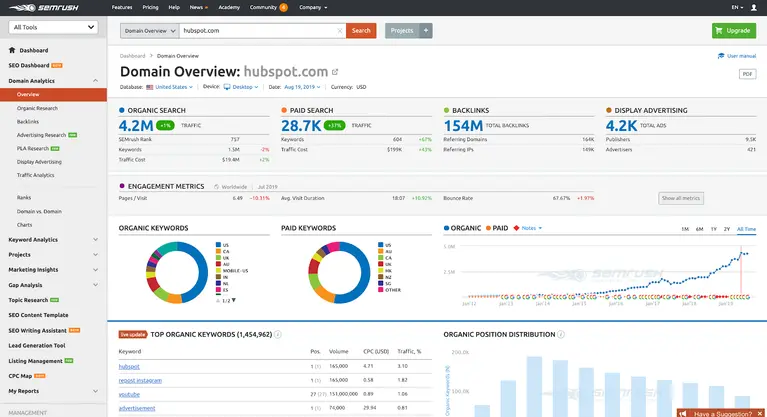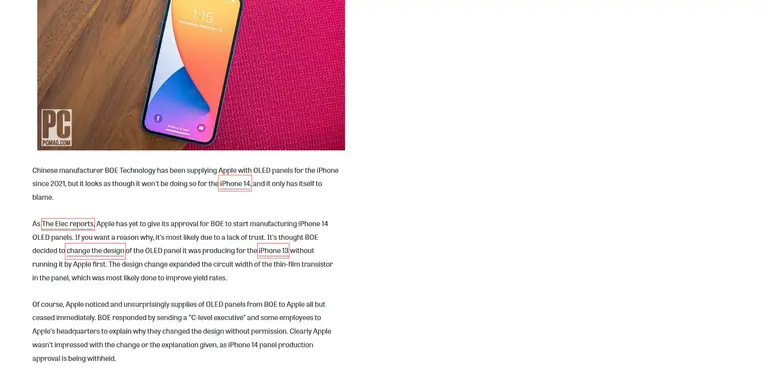
SEO Link Profile Audit: The Things You Should Be Checking
SEO link profile audits are an important part of any link-building campaign. A link audit is crucial because it helps you figure out which links are banes and which ones are boons.
By understanding the important things to Google, you can ensure that your link-building efforts are effective and improve your website's visibility.
Below are seven key things to check when conducting an SEO link profile audit:
1. Are all of your Links from High-quality Sources
By ensuring that your links come from high-quality sources, you can improve your site's ranking and visibility. During an audit, you should ensure that all of your links are legitimate and relevant and that they come from sources with a good reputation.
One way to check the quality of your links is to look at their Domain Authority (DA), a metric that measures a website's ability to rank in search engines. The higher the DA of a website, the more likely it is that the site is a high-quality source.
You can use Moz to perform this task. Two more tools with the same functionality are Ahrefs and WSO.
Here’s a screenshot of Ahrefs showing the DA of backlinks:

2. Is Your Site Plagued by Toxic Links
A few telltale signs indicate whether or not a link is toxic. Toxic links generally have one or more of the following characteristics:
- Low-quality
- Spammy
- Artificial or
- Dangerous
These links are often from sources that don't add any real value to your website and can hurt your SEO efforts. Toxic links are usually generated through black hat SEO techniques and can lead to penalties from Google.
If the website linking is riddled with spelling and grammar mistakes or a part of 3-Ps (Porn, Pill & Poker sites), the link was likely created to manipulate your site's rank in SERPs.
You might also see many unnatural/spammy links from the same domain. These are toxic links, and you can use Google's Disavow Tool to report any such links to Google.
Once you've identified the toxic backlinks, you'll need to create a disavow file. This text file contains a list of the URLs of the toxic backlinks you want to disavow. Then, upload the disavow file to Google Search Console.
Three Helpful Sites to Generate Disavow Files:
- URL Decode - A browser-based Disavow tool
- DFGT - A Chrome extension by Zuumsoft featured in the web store for following best practices.
- Small SEO Tools - Zuumsoft's browser-based Disavow tool.
Here’s a screenshot of the browser-based Disavow tool from Small SEO Tools:

3. Fix Links to Dead & Broken Pages
Broken links are links that don't work. They can be caused by various reasons, such as a website being down, incorrect links, or expired pages. These links can hurt your website's SEO and cause customers to leave your website.
Broken links can occur for various reasons, but usually, the site has been deleted, renamed, or moved. The link is no longer valid when this happens, leading to an error message.
Depending on the broken link's nature, a web server will show different error codes such as 404 Page Not Found, Bad Host, and 404 Bad Request. Broken links can be frustrating for customers and hurt your website's search engine ranking.
There are a few ways to fix broken backlinks:
- One way is to use the "301 redirect" code. This tells the search engine that the link has been moved and updates its records.
- Contact the website owner (if it is an external link) and let them know about the updated URL.
You can check for broken links using this tool:
4. Where Does Your Backlink Profile Stand
Benchmarking your backlink profile against competitors can give you an idea of where your site stands in terms of link popularity and authority.
Comparing your link profile to those of your competitors can help you identify opportunities for improvement and areas where your site is already doing well.
Also, by analyzing your competitors' backlinks, you can gain insight into the types of links that are most important to them and identify potential link sources for your site. This will help you create a plan to acquire similar links.
Tips:
- While performing this process, categorize the backlinks by types to understand what kind of content attracts more links to your competitors' websites.
- Also, it is worth looking at your competitors' link attributes to find their weak spots.
You can use SEMrush to analyze competitor backlinks:

5. Are your Anchor Texts Diversified
Anchor texts are nothing but clickable text in a hyperlink. In SEO, they are important because they are one of Google's main factors in ranking websites. One can use Anchor texts to indicate a page's topic and link to other websites.
First, let's understand the relationship between anchor text and Google's ranking algorithms. For search engines, the relevance of the inbound anchor text is a signal to determine the link's nature.
Repetition of an anchor text may lead to penalization. This is because crawlers will interpret the repetition and over-optimized anchor texts as attempts to manipulate them.
The unfortunate thing here is that you can't influence webmasters on how to use anchor text while linking to your content.
"So, what options do I have?" you may ask.
Here are the Solutions:
- Communicate with the relevant webmasters and ask them to add some long-tail keywords to the exact anchor text that harms your ranking.
- Remove the backlinks with exact match anchors that affect your ranking.
- Consider strategies such as guest-posting to have full control over how your anchor text should be.
Here’s a screenshot of what anchor texts look like:

6. How About Diversity in Links
Now that you know how to ensure anchor text diversity let's see how to implement heterogeneity in your links.
To begin with, compare the number of total backlinks with the number of linking domains. Having "many" links from unique domains is always better than having "too many" links from the same domain.
Another important thing one must notice is the number of links from homepages. Too many links from homepages may be interpreted as paid ones by search engines. Hence, ensuring that such links are organic is a must.
Speaking about homepages, if too many inbound links point to your homepage, get ready for some extra work. Come up with a plan to achieve links to your internal pages to establish manifoldness.
Tip: Consider web directories, blog comment sections, forums, and social bookmarking sites for building links to ensure link diversity.
Quora is a good platform for building links:

7. Keep an Eye on the Dofollow vs. Nofollow Ratio
Nofollow and dofollow links are two types of hyperlinks.
A nofollow link is a type of hyperlink that Google uses to tell its search engine crawlers not to follow the link. This is done to prevent the search engine crawlers from indexing the website linked to and then ranking it in SERPs.
Nofollow links don't pass along any SEO juice, aka link equity, to the destination page, while dofollow links do.
They're both valuable for different reasons:
- One can use nofollow links to control how much link juice passes from one page to another and prevent spammy links from harming your site's reputation.
- Dofollow links are important because they pass on the SEO benefits of the website they are linking to.
When a website has the right mixture of high-quality dofollow and nofollow links, it subtly tells search engines that the links were achieved naturally.
Tip: There is no magic dofollow vs. nofollow ratio number. Anyone telling you otherwise is wrong. The ratio varies depending on your sector. Hence, test different ratios to arrive at your "magic" number.
Here’s a screenshot of how to implement the nofollow tag:

SEO Link Profile Audit - FAQs
1. How Often Should I Perform A Link Audit?
The frequency at which one should conduct a link audit depends on various factors, including the website's age, industry, and the number and quality of inbound links. Generally, we recommend that websites conduct a link audit thrice a year.
2. Why Is Link Audit Important?
A link audit is important because it can help identify broken links on a website. This is important because it can help improve the user experience on a website and the website's SEO. The audit also helps identify any spammy or low-quality links that may be harming the website's SEO.
3. What Are Some Recommended Tools To Conduct A Link Audit?
There are several good tools available to help conduct a link audit. SEMRUSH and ScreamingFrog are two popular options, both of which offer many features to help analyze your website's links. These tools can help you identify broken/toxic links, evaluate the quality of your links, and more.
Key Takeaways:
- Keep toxic links at bay.
- Fix broken links before it affects your users' experience.
- Find the right nofollow vs. dofollow ratio.
- Ensure diversity in links and anchor text.
- Benchmark your backlink profile against your rivals' ones.
- Make sure the inbound links come from reputed sites.
ABOUT THE AUTHOR:
Brice Decker

Brice has been handling marketing projects for more than 12 years and he is providing consulting services on SEO, Social Media and PPC. He has a huge expertise in working at large corporations including Accenture Interactive & PwC Digital Services.
ABOUT THE AUTHOR:
Brice Decker

Brice has been handling marketing projects for more than 12 years and he is providing consulting services on SEO, Social Media and PPC. He has a huge expertise in working at large corporations including Accenture Interactive & PwC Digital Services.
Related Post
How to Rebrand Your Business Without Losing SEO?